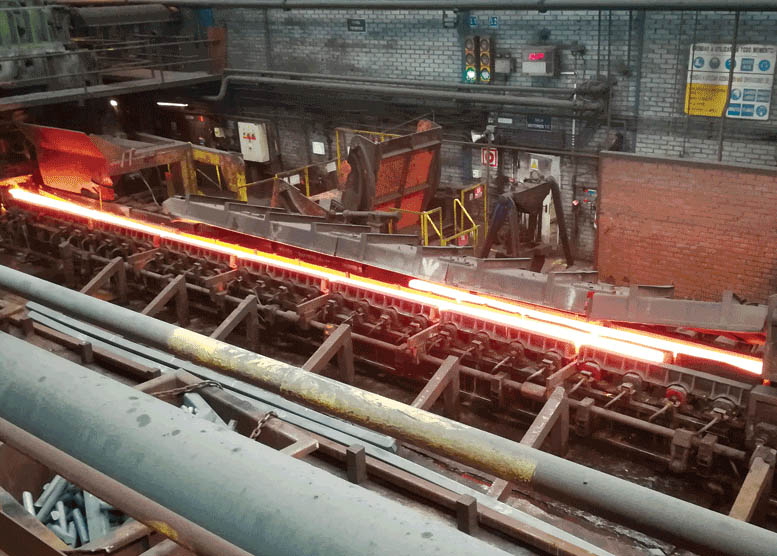
Flexible operations for Celsa Nervacero

Celsa Nervacero and Russula upgraded the 800,000 tpy two-strand bar mill, located in Bilbao, Spain. The purpose of the upgrade was to update the legacy control systems and network.
Update obsolete equipment
Multiple hardware platforms and customized software were integrated together. The rolling mill control system was based on an Ingeteam PLC that communicated by Profibus with the rest of the rolling mill control equipment, Siemens ET200S and ET200SP remote signal stations and drives from three different manufacturers, ABB DCS800, Ingeteam and Siemens Masterdrive. The SCADA system that managed the operation and supervision of the rolling mill was based on an architecture developed by Ingeteam. Celsa Nervacero contracted Russula to simplify and unify the automation configuration.
Multi-phase automation upgrade
In order to minimize the impact on production the project was divided into two phases. The scope of the first phase consisted of upgrading the control system, drives and network for the roughing mill, intermediate mill, and high speed bar mill outlet. The Spooler line had been installed recently and was incorporated into the new HMI system in this phase. The automation upgrade of the cooling bed and bundling area will be implemented in the second phase during a planned shutdown in the future.
Automation Scope
To simplify the mill’s current control configuration, the Celsa Nervacero and Russula team proposed a control architecture based on the Siemens S7-1500 control system, Wonderware Intouch HMI System and a ring network with manageable switches creating virtual networks. Whenever possible existing operator desks, communication cabinets, remote IOs and drives were reused and integrated into the new network to keep project costs down. The automation scope of supply included the following engineering, equipment and on-site services:
Bar mill commissioned in August 2017
Phase one of the project was commissioned last August during the summer maintenance shutdown. Up to sixteen members of the Russula team were on-site during the entire month to supervise the installation of the new controllers and drives, to modify the existing network, to perform system checks and to provide production support during the startup. This automation upgrade was challenging for many reasons; the multiple outlet finishing area equipment configuration, two strand control at high speeds and the sheer quantity of electrical and control changes were all challenges that had to be overcome in a tight downtime window. On August 2nd, the Celsa Nervacero and Russula startup successfully rolled 12mm rebar with the new automation configuration. As the mill production staff tests the entire product range, Russula engineers have remained on-site to give production support.
“One of the primary benefits of upgrading the mill controls is system reliability. Consistent control translates into other key benefits, such as product quality, uptime and production capacity.”
Israel Rivera, Maintenance Manager, Celsa Nervacero
Flexible operations
The automation upgrade replaced outdated control equipment that improved system reliability, unified mill communications and made the operations more flexible. Now with the new ring network, engineering and maintenance are able to access all areas of the plant. When any equipment malfunctions or becomes exposed to a potential problem, maintenance can pull and trend data from a specific time to help in troubleshooting the root cause of the problem. Key parameter inputs trends are also invaluable for scheduling preventive and corrective maintenance programs. As more products are tested in the coming months, the mill management plans to improve the flexibility of the plant by adding the functionality to roll each strand independent from the other, producing two different products at the same time.